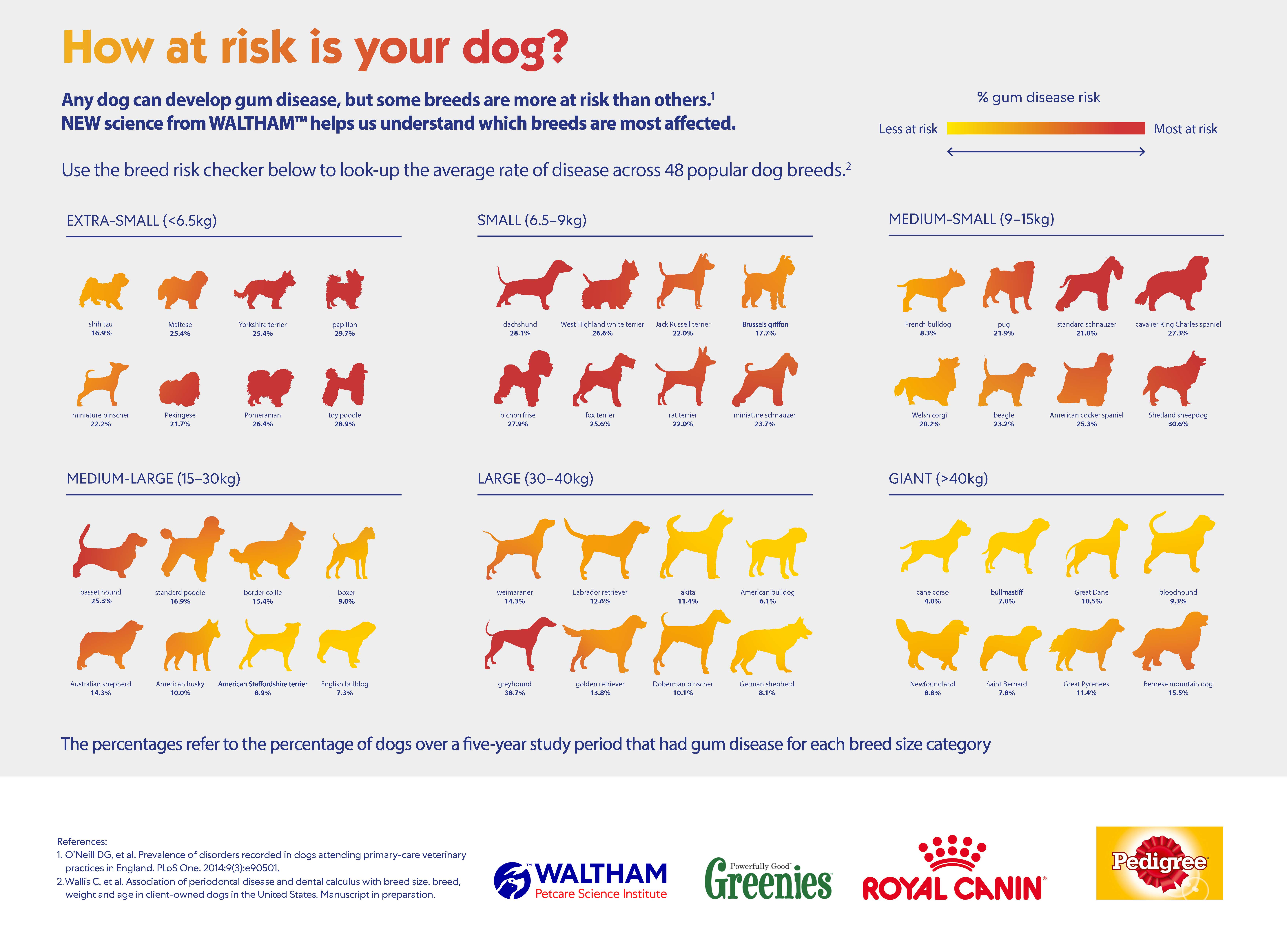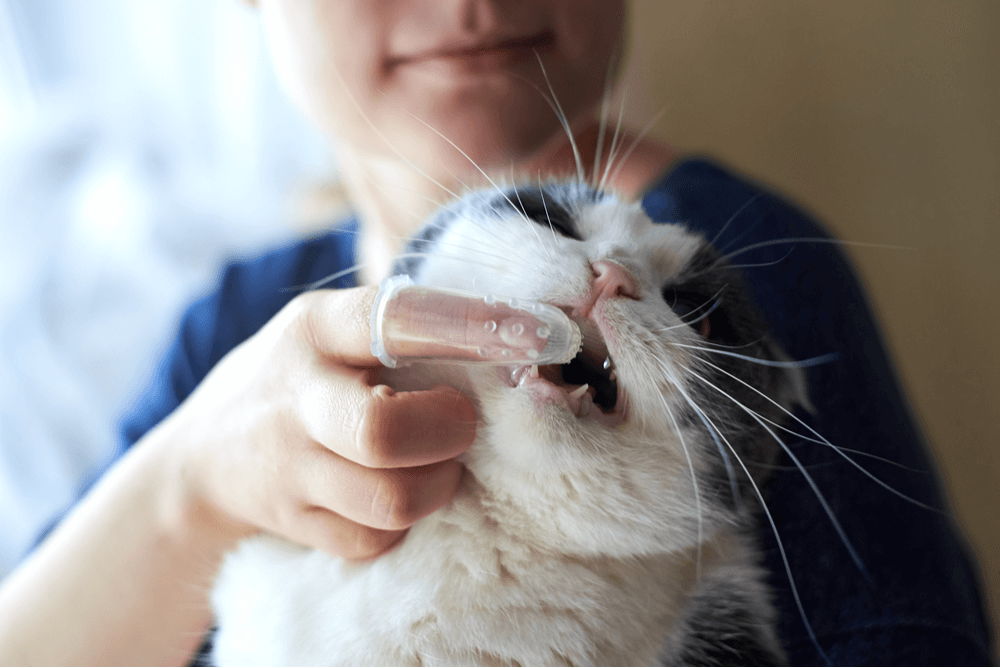
Oral Health
Keeping your pets’ teeth healthy: a step-by-step guide
Keeping our pets’ teeth healthy is key to our furry friends’ health and wellbeing. Making sure that pets get used to good oral hygiene from an early age - ideally, as soon as they get their adult teeth - can help prevent dental disease and other serious health issues associated with it, such as heart disease.
The science behind pet dental care
Unfortunately, dental disease is one of the most commonly diagnosed health problems in both cats and dogs: 3 out 4 dogs over the age of 3 years suffer from it. It is also the most common condition affecting dogs in the UK.
Given its widespread nature, our researchers have been investigating this condition in search of new ways to prevent and delay its onset. Thanks to their efforts, we now know dogs are more prone to gum disease - an inflammation of the structures supporting the teeth - than dental decay (cavities). This is because dogs lack the kind of bacteria that cause cavities in humans. Our teams have also found what types of bacteria are linked to gum disease in cats.
Is my dog at risk?
Together with our Banfield Pet Hospital colleagues, we have analysed how widespread gum or periodontal disease is across 48 of the most popular US dog breeds. Small breeds are more likely to develop this condition than larger ones.

How can you tell if your pet might be developing gum disease?
First, make sure your cat or dog is comfortable with you touching their mouth. Their gums should be pink (redness means inflammation, a sign of disease), and the teeth off-white with minimal build-up of tartar (a discoloured deposit). Tartar can build up unseen under the gum line, which is why pets need regular oral health exams.
Pets will normally hide their pain, so make sure to watch out for these more noticeable signs:
- Bad breath
- Chewing on one side of the mouth
- Trouble eating (especially if dropping food when eating)
- Not playing with their favourite toys as often
- Avoiding touches on their snout or head
- Sneezing or nasal discharge
- Bloody saliva
- Weight loss
- Lumps under the eyes or in the mouth
- Receding gums
- Generally distant and less enthusiastic than usual
Why prevention is better than cure
Dental disease in pets develops gradually and may be reversed if caught and treated early on. Preventing it, however, is better than any treatment, especially when it comes to small dog breeds. They are more prone to developing gum disease than large breeds, and our research has shown that if left untreated, this condition develops quickly and advances even faster as Miniature Schnauzers age. The same study also showed gum disease developed even when there were no visible signs of gingivitis, the first stage of the condition.

4 steps to keep your pet's teeth healthy
Step #1 Brushing your pet's teeth at home
Establishing an oral hygiene routine from an early age can help pets tolerate and maybe even enjoy daily toothbrushing.
Download a simple guide to brushing your cat’s or your dog's teeth.
Step #2 Oral health exams
Take your pet to the vet for an oral health exam every 6 months. The veterinarian will examine the teeth for tartar and the gums for inflammation (gingivitis) and will recommend specific treatments if needed.
Step #3 Dental chews
Feeding dogs dental chews may also help prevent gum disease, as some can reduce tartar. Dogs love to chew, so when it comes to toys, make sure you select a safe one to protect your dog’s teeth.
Step #4 Include dry dental food in their diet
A home care regime that includes daily toothbrushing, scientifically proven dental chews, and regular veterinary check-ups ensures you are doing your very best to maintain good oral hygiene for your pet. In addition, feeding dry food may help maintain your pet’s oral health. For dogs particularly prone to dental disease, you may wish to consider feeding a dry dental diet specifically designed to help reduce plaque and tartar build up.
Visit our cat and dog care resources to learn more about responsible pet ownership.





